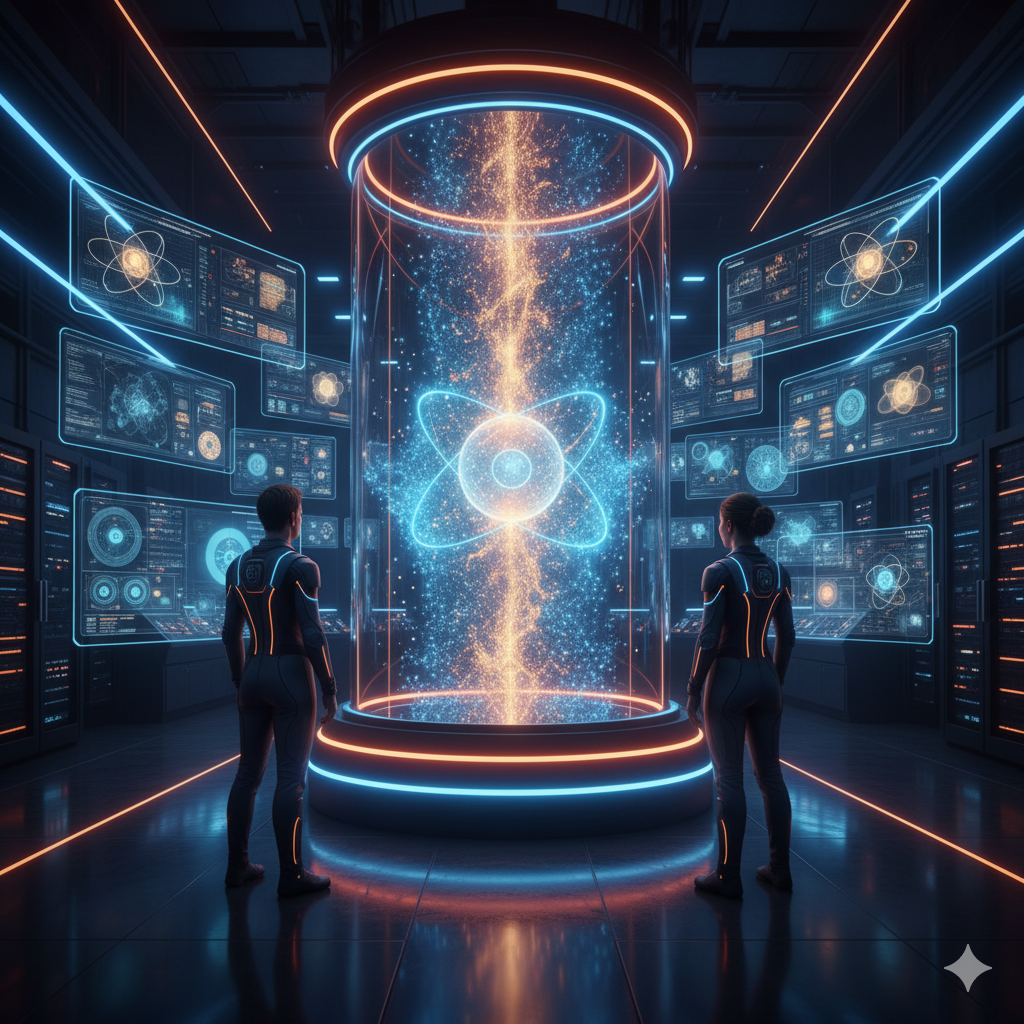Introduction
Nuclear science and technology has been a cornerstone of India’s scientific and technological progress. Since its inception in the mid-20th century, India has made remarkable strides in harnessing nuclear energy for peaceful purposes, including electricity generation, medical applications, agriculture, and industrial development.
India’s nuclear program has been shaped by the dual imperatives of energy security and technological self-reliance, leading to the development of a unique three-stage nuclear energy program. Among the major advancements, the Fast Breeder Reactor (FBR) program stands out for its potential to ensure long-term sustainable energy supply using India’s abundant thorium resources. This essay explores the evolution of nuclear science in India, its technological milestones, and the strategic significance of the fast breeder reactor program.
1. Early Development of Nuclear Science in India
1.1 Pioneering Efforts
- India’s nuclear journey began with the establishment of the Tata Institute of Fundamental Research (TIFR) in 1945 under the leadership of Homi Jehangir Bhabha, widely regarded as the father of Indian nuclear science.
- The initial focus was on fundamental research in nuclear physics, including the study of cosmic rays, nuclear reactions, and particle physics.
1.2 Atomic Energy Act and Institutional Framework
- The Atomic Energy Act of 1948 laid the foundation for nuclear governance in India.
- The Department of Atomic Energy (DAE), established in 1954, became the central organization overseeing research, development, and applications of nuclear technology.
1.3 Establishment of Research Centers
- Bhabha Atomic Research Centre (BARC), Mumbai: Established in 1954, it became the hub of nuclear research, reactor design, and isotope production.
- Indira Gandhi Centre for Atomic Research (IGCAR), Kalpakkam: Established in 1971, IGCAR focuses on fast reactor technology and advanced fuel cycles.
2. Growth of Nuclear Technology in India
2.1 Nuclear Power Program
India’s nuclear power program is structured around three stages, each designed to exploit specific resources:
- Stage I – Pressurized Heavy Water Reactors (PHWRs)
- Uses natural uranium as fuel and heavy water as moderator.
- Focus: Electricity generation using indigenous technology.
- Key plants: Tarapur, Rawatbhata, Kalpakkam.
- Stage II – Fast Breeder Reactors (FBRs)
- Uses plutonium-239 derived from Stage I reactors.
- Goal: Breed more fuel (uranium-233 or plutonium-239) than consumed.
- Stage III – Thorium-Based Reactors
- India has the world’s largest thorium reserves, primarily in Kerala, Tamil Nadu, and Odisha.
- Thorium reactors will use uranium-233 to generate electricity, achieving long-term energy security.
2.2 Reactor Development and Achievements
- Tarapur Atomic Power Station (1969): India’s first commercial nuclear power plant.
- Rajasthan Atomic Power Station: First indigenously designed PHWRs, demonstrating self-reliance.
- Prototype Fast Breeder Reactor (PFBR): Being developed at Kalpakkam, designed for 500 MW, utilizing plutonium as fuel.
2.3 Nuclear Fuel Cycle and Technology
- India has developed capabilities in fuel fabrication, reprocessing, and waste management.
- Reprocessing plants at Tarapur and Kalpakkam allow recovery of plutonium for FBRs.
- Advanced technologies are used in radioisotope production for medicine, agriculture, and industry.
2.4 Applications Beyond Energy
- Medicine: Production of radioisotopes like Technetium-99m for diagnostic imaging and cancer therapy.
- Agriculture: Development of radiation-induced crop varieties with higher yield and disease resistance.
- Industry: Use of isotopes for non-destructive testing, sterilization, and material analysis.
3. Strategic Significance of Nuclear Science
3.1 Energy Security
- Nuclear power provides base-load electricity independent of fossil fuel imports.
- PHWRs and FBRs are key to reducing carbon emissions and supporting India’s climate goals.
3.2 Technological Self-Reliance
- Indigenous development of reactors, fuel fabrication, and waste management systems reduces dependence on foreign technology.
- The nuclear program also strengthens India’s defense and space technology sectors.
3.3 International Recognition
- India’s nuclear achievements, including successful nuclear tests in 1974 and 1998, positioned it as a responsible nuclear power.
- The NSG waiver in 2008 allowed India to engage in civil nuclear trade, accelerating technology access.
4. Fast Breeder Reactor (FBR) Programme
4.1 Concept of Fast Breeder Reactors
- Unlike conventional reactors, FBRs use fast neutrons to convert fertile isotopes (like U-238 or Th-232) into fissile fuel (Pu-239 or U-233).
- FBRs are called “breeders” because they generate more fuel than they consume, making them ideal for resource-limited countries.
4.2 Development in India
- The FBTR (Fast Breeder Test Reactor) at Kalpakkam (commissioned in 1985) was India’s first experimental fast reactor.
- The PFBR (Prototype Fast Breeder Reactor) is under advanced stages, designed to demonstrate full-scale commercial FBR operation.
4.3 Advantages of Fast Breeder Reactors
- Efficient Utilization of Uranium and Thorium
- FBRs can extract maximum energy from limited uranium, extending nuclear fuel reserves.
- Acts as a bridge to thorium-based reactors, leveraging India’s abundant thorium reserves.
- Sustainable Energy Generation
- Breeding more fuel than consumed ensures long-term energy security, reducing dependence on imported uranium.
- Breeding more fuel than consumed ensures long-term energy security, reducing dependence on imported uranium.
- Reduction of Nuclear Waste
- FBRs can transmute long-lived radioactive isotopes, reducing volume and toxicity of nuclear waste.
- FBRs can transmute long-lived radioactive isotopes, reducing volume and toxicity of nuclear waste.
- Support for Three-Stage Program
- FBRs produce plutonium-239, essential for Stage III thorium reactors, completing India’s self-reliant energy vision.
- FBRs produce plutonium-239, essential for Stage III thorium reactors, completing India’s self-reliant energy vision.
- Carbon-Free Base-Load Electricity
- Contributes to low-carbon electricity production, supporting climate change mitigation.
5. Challenges in Nuclear Technology Development
5.1 Technological Complexity
- FBRs require advanced metallurgy, coolant management, and reactor physics expertise.
- Handling high-temperature sodium coolant poses engineering and safety challenges.
5.2 Financial and Logistical Constraints
- Construction and operation of FBRs demand high capital investment and skilled manpower.
- Delays in commissioning and operational costs can strain budgets and timelines.
5.3 Regulatory and Safety Issues
- Nuclear safety is critical due to potential environmental and human risks.
- India follows AERB (Atomic Energy Regulatory Board) guidelines to ensure safe operation and emergency preparedness.
5.4 Public Perception and Environmental Concerns
- Public apprehension regarding nuclear accidents and waste disposal must be addressed through awareness and transparent policies.
6. Future Prospects
- Expansion of PFBRs: Scaling up the fleet to commercial FBRs of 500 MW and above.
- Thorium Utilization: FBRs will generate U-233 for thorium reactors, ensuring a sustainable nuclear fuel cycle.
- Integration with Renewable Energy: Nuclear power complements solar and wind by providing base-load electricity.
- Research and Innovation: Advanced materials, fast neutron technology, and modular reactors are areas of ongoing research.
Conclusion
India’s journey in nuclear science and technology reflects a commitment to energy security, technological self-reliance, and scientific excellence. From early research at TIFR to cutting-edge reactor designs at BARC and IGCAR, India has steadily advanced in reactor technology, fuel cycle management, and nuclear applications.
The Fast Breeder Reactor program holds immense promise, providing a sustainable, long-term solution to India’s energy needs, enabling optimal utilization of uranium and thorium resources, and contributing to carbon-free electricity generation. As India continues to innovate, expand infrastructure, and strengthen regulatory frameworks, its nuclear program is poised to play a pivotal role in national development and global energy leadership.




